Sensor Sweep: Free Comic Book Day, White Dwarf, Chuck Dixon, James Bond
Monday , 8, May 2023 Sensor Sweep 2 CommentsConan (Essential Malady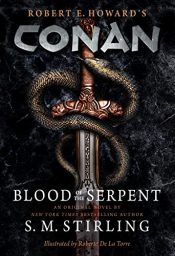 ): From this alone we can establish that both the publisher and the author are embarrassed by (or dislike) the source material. It is not clear who wrote the Afterword so I will assume this is a shared opinion. It would have been more honest to put this in the Foreword so a potential reader could have saved themselves the hassle of finding out. As opposed to “some” of today’s readers, the main reason Howard is seeing a resurgence in popularity is because readers are looking for exactly what they find within Howard. Far from “jarring”, they find his stories refreshing and exciting.
): From this alone we can establish that both the publisher and the author are embarrassed by (or dislike) the source material. It is not clear who wrote the Afterword so I will assume this is a shared opinion. It would have been more honest to put this in the Foreword so a potential reader could have saved themselves the hassle of finding out. As opposed to “some” of today’s readers, the main reason Howard is seeing a resurgence in popularity is because readers are looking for exactly what they find within Howard. Far from “jarring”, they find his stories refreshing and exciting.
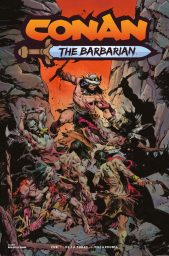 Comic Books (Kabooom): While I usually try and make it out to the shops for Free Comic Book Day, that journey took on a special urgency this year, thanks to the release of Conan The Barbarian #0. I’m something of an expert on all things sword and sorcery and a fan of Conan in particular. Also, while I did enjoy most of the offerings produced by Marvel Comics after they briefly took control of the Conan license in 2019, even the best of those stories was somewhat muted by the need to stick to a 15 and up rating.
Comic Books (Kabooom): While I usually try and make it out to the shops for Free Comic Book Day, that journey took on a special urgency this year, thanks to the release of Conan The Barbarian #0. I’m something of an expert on all things sword and sorcery and a fan of Conan in particular. Also, while I did enjoy most of the offerings produced by Marvel Comics after they briefly took control of the Conan license in 2019, even the best of those stories was somewhat muted by the need to stick to a 15 and up rating.
Firearms (Special Ops): Regarding firearms, China is known for its extensive range of products, from assault rifles to submachine guns. One such submachine gun is the Chang Feng 05, the CF-05. Developed in the early 2000s, this weapon is notable for using a high-capacity helical magazine on top of the receiver. This article will examine the CS/LS06, its features, development history, and military and law enforcement use.
extensive range of products, from assault rifles to submachine guns. One such submachine gun is the Chang Feng 05, the CF-05. Developed in the early 2000s, this weapon is notable for using a high-capacity helical magazine on top of the receiver. This article will examine the CS/LS06, its features, development history, and military and law enforcement use.
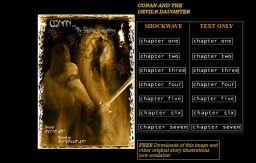 Conan (Sprague de Camp Fan): There are undoubtedly rarer Conan stories, but this is probably the rarest “authorized” pastiche. “Conan and the Devil’s Daughter” appeared on the conan.com website that existed when the Conan the Adventurer live-action TV series was airing. No one was a big fan of the show. It was too cheaply produced; not especially faithful to any Robert E. Howard or L. Sprague de Camp & Lin Carter story (although “The Tower of the Elephant” and “The Thing in the Crypt” were slightly adapted in the first two episodes).
Conan (Sprague de Camp Fan): There are undoubtedly rarer Conan stories, but this is probably the rarest “authorized” pastiche. “Conan and the Devil’s Daughter” appeared on the conan.com website that existed when the Conan the Adventurer live-action TV series was airing. No one was a big fan of the show. It was too cheaply produced; not especially faithful to any Robert E. Howard or L. Sprague de Camp & Lin Carter story (although “The Tower of the Elephant” and “The Thing in the Crypt” were slightly adapted in the first two episodes).
Fiction (Paperback Warrior): Before his death in 1999, David North did a lot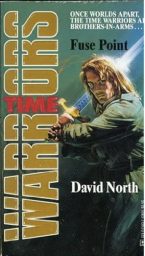 of paperback writing for the Gold Eagle imprint, including four Executioners, two Super Bolans, two Heroes, and one Able Team. In 1991, they gave him his own time-jumping adventure series called Time Warriors that lasted three installments. The first novel in the short-lived series is called Fuse Point.
of paperback writing for the Gold Eagle imprint, including four Executioners, two Super Bolans, two Heroes, and one Able Team. In 1991, they gave him his own time-jumping adventure series called Time Warriors that lasted three installments. The first novel in the short-lived series is called Fuse Point.
RPG (Walker’s Retreat): Advanced Dungeons & Dragons 1st Edition makes assumptions in its rules. Those assumptions have consequences. The cosmology presented in the rules creates a cosmic-level theater of Kriegspiel, with individual Prime Material Planes being akin to skirmish-scale Braunstein events. Those cosmic entities play this game by way of contacting mortal entities, selecting some of them to be their agents.
Gaming Magazines (Grognardia): Issue #73 of White Dwarf (January 1986)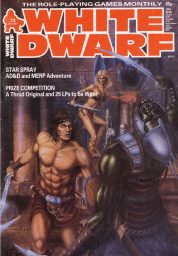 features a cover by Lee Gibbons, an artist whose work I recall from various Call of Cthulhu products over the years. Inside, Ian Livingstone boasts of the fact that the UK pharmacy chain, Boots, has “decided to stock role-playing games, Citadel miniatures, and Fighting Fantasy books.” He sees this as a major victory that will help “dispel the illusion of [the hobby’s] being a weirdos’ cult.”
features a cover by Lee Gibbons, an artist whose work I recall from various Call of Cthulhu products over the years. Inside, Ian Livingstone boasts of the fact that the UK pharmacy chain, Boots, has “decided to stock role-playing games, Citadel miniatures, and Fighting Fantasy books.” He sees this as a major victory that will help “dispel the illusion of [the hobby’s] being a weirdos’ cult.”
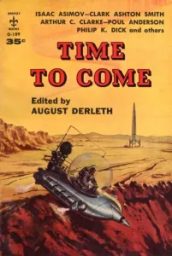 Horror (Dark Worlds Quarterly): The 1950s saw the passing of the Pulps and Weird Tales in particular. Because of this Carl Jacobi’s work becomes more Science Fiction oriented. The new magazines and digests that replaced the Pulps were largely SF. His primary market becomes Fantastic Universe, which published a more fantasy blend of Science Fiction. In 1957 Carl began selling to The Saint Magazine and later Mike Shayne Mystery Magazine, moving into the Mystery genre. His Horror fiction went almost exclusively to August Derleth and Arkham House anthologies.
Horror (Dark Worlds Quarterly): The 1950s saw the passing of the Pulps and Weird Tales in particular. Because of this Carl Jacobi’s work becomes more Science Fiction oriented. The new magazines and digests that replaced the Pulps were largely SF. His primary market becomes Fantastic Universe, which published a more fantasy blend of Science Fiction. In 1957 Carl began selling to The Saint Magazine and later Mike Shayne Mystery Magazine, moving into the Mystery genre. His Horror fiction went almost exclusively to August Derleth and Arkham House anthologies.
Comic Books (Clifton Duncan): Why Modern Comics Suck, and Why We Love Batman. Chuck Dixon is the most prolific scripter in the history of comic books, with well over 40,000 pages of comics in publication. His work on both Batman and the “Punisher” are considered seminal to those franchises. He contributed the majority of the writing done on the legendary ‘Knightfall’ event for the Batman comic, which formed the basis for Christopher Nolan’s “Dark Knight” trilogy (he also co-created the iconic villain Bane, with Graham Nolan), and is also the co-creator of the Birds of Prey comic series with Jordan B. Gorfinkel.
Fandom (Pulprev): Larry Correia wrote a blog post calling out a specific demographic of epic fantasy fans: those who won’t take a chance on a new author. After being burned by the likes of George R. R. Martin and Patrick Ruthfoss, they won’t read a new author unless his series is complete, for fear that they won’t finish the series. Correia argues in his own inimitable way that without the support of fans, epic fantasy will die out.
Writers (DMR Books): The first story I submitted was “Demise of the Star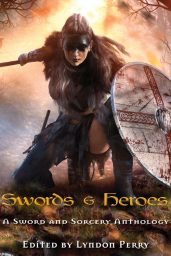 Queen,” and it was immediately picked up by a publisher. It’s a simple tale of space pirates walking into an ambush. The plot is pretty basic and the prose, frankly, terrible, but the successful sale proved that my hunch was correct. Short stories quickly turned into my favorite format.
Queen,” and it was immediately picked up by a publisher. It’s a simple tale of space pirates walking into an ambush. The plot is pretty basic and the prose, frankly, terrible, but the successful sale proved that my hunch was correct. Short stories quickly turned into my favorite format.
RPG (Grumpy Wizard): The study of history was clearly an important catalyst for the creation of D&D. How else could the game have been created if Dave and Gary weren’t interested in medieval and ancient history? For a pair of wargamers, historical modeling was the obvious path to follow in it’s development. Dave Arneson was known for diving deep into the specifics of the eras that he was wargaming. Looking through the Dungeon Masters Guide, even a casual reader would notice that Gary references real world history in way that makes it clear he was widely read.
Fantasy (Notion Club Papers): I was always struck by CS Lewis’s hardline attitude to happiness or self-gratification in relation to Christianity – the way he emphasized the problem of mixing-up the ‘therapeutic’ aspect of belief with the business of what is actually true. In the Screwtape Letters and Great Divorce (as well as his more abstractly theological works) Lewis negatively depicted people who fluently excused whatever they wanted to do – what they currently enjoyed doing, or what made them feel better – by making arguments that linked these to Christianity.
D&D (Monsters & Manuals): High-level play is a perennial problem for D&D. This is partly just a consequence of inherent or structural factors – most campaigns start at 1st level so there is just way more advice and material available with respect to games involving low-level PCs, and there is anyway a general bias in the human psyche toward preferring stories in which the main character begins as a callow neophyte and arcs towards heroism rather than starting out as a megastar to begin with. (Roger Zelazny is the main author I can really think of who repeatedly bucks that trend.
Pulp (Pulp Super-Fan): After too long, Pulp Adventures #41 is out from Bold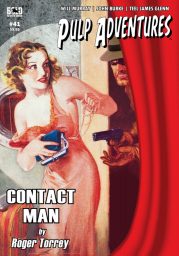 Venture Press, dated Fall 2022. As always, we get a selection of new and classic pulp stories, with some non-fiction pieces. This time the issue clocks in at 180 pages, longer than previous ones. I had hoped they can get back to being quarterly, but looks like we’ll get only two issues this year. This is the ninth year of publication for the new version of Pulp Adventures.
Venture Press, dated Fall 2022. As always, we get a selection of new and classic pulp stories, with some non-fiction pieces. This time the issue clocks in at 180 pages, longer than previous ones. I had hoped they can get back to being quarterly, but looks like we’ll get only two issues this year. This is the ninth year of publication for the new version of Pulp Adventures.
Horror (DVS Press): Despite being called the father of horror, very few modern authors imitate H.P. Lovecraft. When they do, they tend to steal elements of his “world-building,” that is, they use the Cthulu Mythos or other elements of the stories and write in a totally different style from Lovecraft. This tends to miss what makes Lovecraft’s work compelling; it’s not the mythos itself, but how it is revealed that makes such an impact. Lovecraft is really Weird Fiction, not so much “Horror,” which as a literary genre solidified itself later in the 20th century.
Westerns (Rageaholic): 10 RazörForce-Approved Westerns.
Cinema (Steven Pressfield): I was working on the screenplay for the Steven Seagal movie, Above the Law. I forget who first said this—maybe Steve, maybe the director Andy Davis—but someone piped up, “We need a ‘Turn in your badge and gun’ scene.” I remember thinking, “Oh no, what a terrible cliche! It’s in every cop movie. We can’t be that lame!”
James Bond (The Library Ladder): The James Bond films have had an enormous cultural impact over the past 60 years, but what about the books that inspired them? In their own way, Ian Fleming’s James Bond novels were similarly groundbreaking, giving the emerging spy fiction genre a sense of style and panache while also bringing its brutality out of the shadows. Bond became an archetype and role model despite his many character flaws. But Fleming didn’t create Bond just to entertain readers. He had other objectives in mind, too.
Review (Frontier Partisans): Ace scout Monk alerted me to the coming April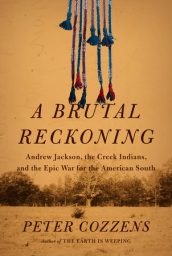 25 publication of Peter Cozzens’ A Brutal Reckoning, an account of the Creek War of 1813. Cozzens knows the period — he wrote a highly regarded dual biography of Tecumseh and his brother Tenskwatawa aka the Shawnee Prophet. The Creek War was a seismic event. The powerful confederacy of the Muskogee people was broken, and the rich lands of western Georgia, Alabama, and Mississippi were opened up for settlement.
25 publication of Peter Cozzens’ A Brutal Reckoning, an account of the Creek War of 1813. Cozzens knows the period — he wrote a highly regarded dual biography of Tecumseh and his brother Tenskwatawa aka the Shawnee Prophet. The Creek War was a seismic event. The powerful confederacy of the Muskogee people was broken, and the rich lands of western Georgia, Alabama, and Mississippi were opened up for settlement.
 Game Replicas (Mojo Bob): With a crew of five*, it must have been pretty cramped in there. I’ve photographed it alongside a Valentine, also in 1:100 scale, and the Valentine was not a notoriously roomy vehicle even with a crew of four.
Game Replicas (Mojo Bob): With a crew of five*, it must have been pretty cramped in there. I’ve photographed it alongside a Valentine, also in 1:100 scale, and the Valentine was not a notoriously roomy vehicle even with a crew of four.
The pulprev link is dead.